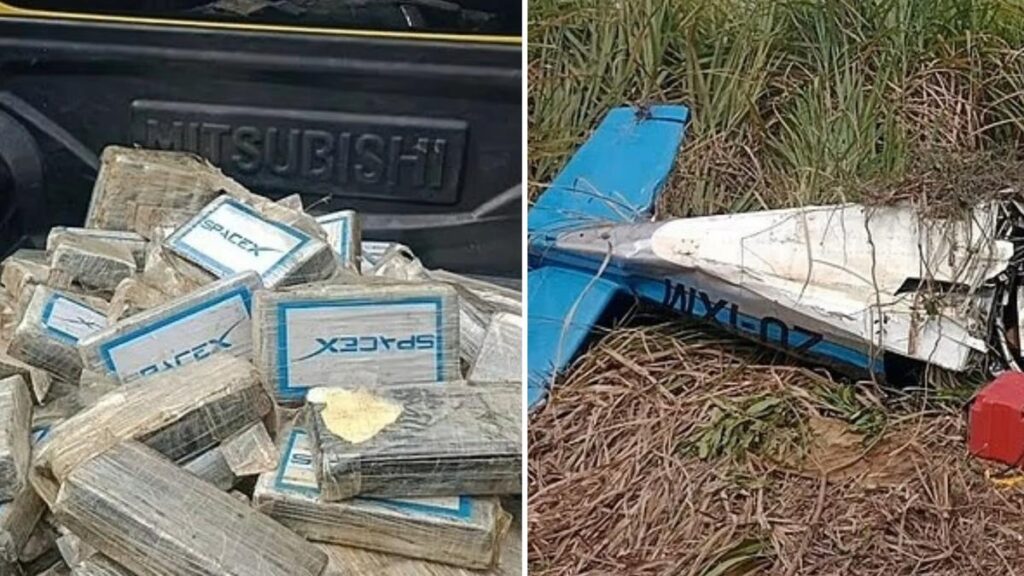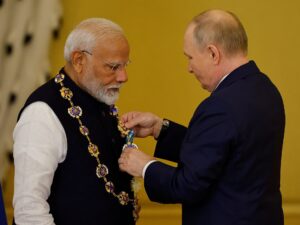
SPACEXDRUG
Authorities in Brazil have confirmed the death of an Australian pilot after a plane crash involving 200 kilograms of cocaine packaged with SpaceX branding. The incident occurred in a sugarcane field in Coruripe, a coastal area in the Alagoas region, where police discovered the wreckage and the body of 46-year-old Timothy J. Clark.
Mr. Clark, identified through his Australian nationality documents, was piloting the aircraft when it crashed around 1:30 PM on Sunday. The crash site is known to be part of an international drug trafficking route, according to local media outlet Gazeta. The aircraft, registered in Zambia, had reportedly been kept in Brazil for the past two years without logging any flight details with Brazilian authorities. The intended destination of the flight remains unknown.
SpaceX Branding and Drug Trafficking
Images released by the police revealed that the cocaine was packaged into bricks, each wrapped with the distinctive SpaceX logo, known for its association with Elon Musk’s aerospace company. Tests confirmed the substance as cocaine, with the haul estimated to have a street value of approximately $80 million in Australia, a country with notoriously high prices for illicit drugs.
Brazil’s role in the global cocaine trade is significant, acting as a major distribution hub despite producing only small amounts of the drug domestically. A 2016 United Nations report highlighted Brazil as a key departure point for cocaine reaching African, Asian, and European markets, second only to Colombia. The country’s proximity to major cocaine-producing nations like Colombia, Peru, and Bolivia, coupled with poorly monitored borders, facilitates this distribution.
Historical Context and Current Implications
Brazil’s involvement in the cocaine trade is not a new development. The country’s strategic location and economic conditions have long made it a focal point in the global drug trade. The nation is also the world’s second-largest consumer of cocaine, after the United States, largely due to the drug’s affordability, priced as low as $5 per gram.
The use of SpaceX branding in this case raises questions about the tactics employed by drug traffickers to disguise and market their products. While there is no indication of any direct connection between SpaceX and the drug operation, the branding choice suggests an attempt to leverage the company’s high-profile image to evade detection.
Expert Opinions and Future Outlook
Experts in drug trafficking and international crime emphasize the evolving nature of drug smuggling techniques. Dr. Maria Silva, a criminologist at the Federal University of Rio de Janeiro, noted, “Traffickers are increasingly sophisticated in their methods, using branding and technology to mask their operations and appeal to different markets.”
The incident highlights the ongoing challenges faced by law enforcement in combating drug trafficking across borders. With Brazil’s extensive coastline and numerous clandestine airstrips, monitoring and intercepting illegal flights remain daunting tasks for authorities.
As investigations continue, the focus will likely turn to identifying the networks involved in this operation and understanding how such a significant quantity of cocaine was transported and intended to be distributed. This case serves as a stark reminder of the complexities and dangers associated with the global drug trade.
Meanwhile, international cooperation and intelligence sharing are expected to play crucial roles in addressing these challenges. The Brazilian government, along with its international partners, is likely to intensify efforts to dismantle trafficking networks and prevent similar incidents in the future.
In conclusion, the tragic death of Timothy J. Clark and the discovery of SpaceX-branded cocaine underscore the persistent and evolving threat of drug trafficking in Brazil and beyond. As authorities work to unravel the details of this case, the broader implications for international drug enforcement and policy continue to unfold.






